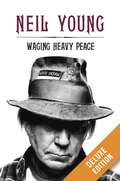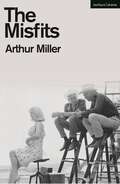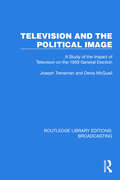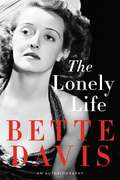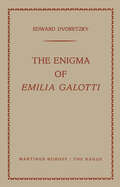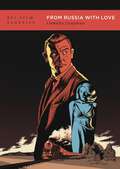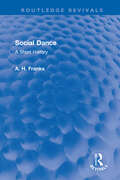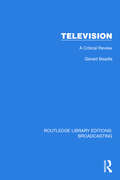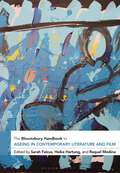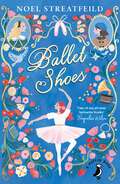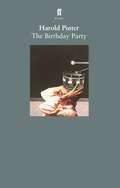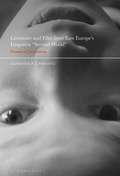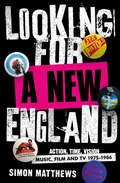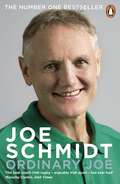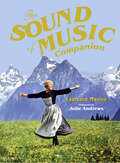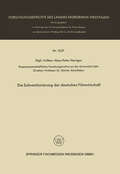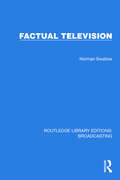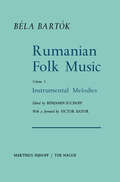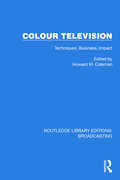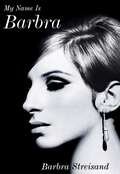- Table View
- List View
Waging Heavy Peace Deluxe: A Hippie Dream
by Neil YoungThe deluxe eBook edition of Waging Heavy Peace includes excerpts of more than fifteen Neil Young songs (personally selected by Young himself) such as "After the Gold Rush," "Like a Hurricane," and "The Needle and the Damage Done," providing a soundtrack to his stories. Interspersed throughout the text are ten rare Young videos from his own archives, offering an uncommon behind the scenes glimpse of the man behind this memoir. In addition, a complete discography guarantees that diehard devotees and new fans alike enjoy the ultimate Neil Young experience. For the first time, legendary singer, songwriter, and guitarist Neil Young offers a kaleidoscopic view of his personal life and musical creativity. He tells of his childhood in Ontario, where his father instilled in him a love for the written word; his first brush with mortality when he contracted polio at the age of five; struggling to pay rent during his early days with the Squires; traveling the Canadian prairies in Mort, his 1948 Buick hearse; performing in a remote town as a polar bear prowled beneath the floorboards; leaving Canada on a whim in 1966 to pursue his musical dreams in the pot-filled boulevards and communal canyons of Los Angeles; the brief but influential life of Buffalo Springfield, which formed almost immediately after his arrival in California. He recounts their rapid rise to fame and ultimate break-up; going solo and overcoming his fear of singing alone; forming Crazy Horse and writing "Cinnamon Girl," "Cowgirl in the Sand," and "Down by the River" in one day while sick with the flu; joining Crosby, Stills & Nash, recording the landmark CSNY album, Déjà vu, and writing the song, "Ohio;" life at his secluded ranch in the redwoods of Northern California and the pot-filled jam sessions there; falling in love with his wife, Pegi, and the birth of his three children; and finally, finding the contemplative paradise of Hawaii. Astoundingly candid, witty, and as uncompromising and true as his music, Waging Heavy Peace is Neil Young's journey as only he can tell it.
The Misfits: The Misfits; After The Fall; Incident At Vichy; The Price; Creation Of The World; Playing For Time
by Arthur MillerDiscover the cinema-novelization of Arthur Miller's 1961 American western film, The Misfits, which was directed by John Huston and went on to be one of the most popular cult films of the 1960s.A story of four lost souls - the beautiful Roslyn who has never belonged to anyone or anything, and three other misfits who roam the open land existing on the little money made from riding in rodeos and rounding up wild horses - who meet in Reno to discover that freedom has its price, and the heart its rules.The Misfits starred Clark Gable, Marilyn Monroe and Montgomery Cliff. Based on a short story of the same name, originally published in 1957, this cinema novel of the film includes an introduction by Arthur Miller himself.
Television and the Political Image: A Study of the Impact of Television on the 1959 General Election (Routledge Library Editions: Broadcasting #36)
by Joseph Trenaman Denis McQuailWas the 1959 UK General Election the first television election? Could television be used to create a Party ‘image’? Television and the Political Image (1961) provides answers to both these questions. It surveys two constituencies, interviewing the same cross-section of electors before and after the election campaign, and analyses and compares the campaigns as conducted by television, radio, the Press, and through the work of the local Parties. Various effects of the political barrage are measured and attributed to their sources; such effects include changes in voting intention during the course of the election campaign, changes in attitudes to Parties and their leaders, and changes in what the voter knows of the parties’ policies.
Television and the Political Image: A Study of the Impact of Television on the 1959 General Election (Routledge Library Editions: Broadcasting #36)
by Joseph Trenaman Denis McQuailWas the 1959 UK General Election the first television election? Could television be used to create a Party ‘image’? Television and the Political Image (1961) provides answers to both these questions. It surveys two constituencies, interviewing the same cross-section of electors before and after the election campaign, and analyses and compares the campaigns as conducted by television, radio, the Press, and through the work of the local Parties. Various effects of the political barrage are measured and attributed to their sources; such effects include changes in voting intention during the course of the election campaign, changes in attitudes to Parties and their leaders, and changes in what the voter knows of the parties’ policies.
The Lonely Life: An Autobiography
by Bette DavisOriginally published in 1962, The Lonely Life is legendary silver screen actress Bette Davis's lively and riveting account of her life, loves, and marriages--now in ebook for the first time, and updated with an afterword she wrote just before her death. As Davis says in the opening lines of her classic memoir: "I have always been driven by some distant music--a battle hymn, no doubt--for I have been at war from the beginning. I rode into the field with sword gleaming and standard flying. I was going to conquer the world." A bold, unapologetic book by a unique and formidable woman, The Lonely Life details the first fifty-plus years of Davis's life--her Yankee childhood, her rise to stardom in Hollywood, the birth of her beloved children, and the uncompromising choices she made along the way to succeed. The book was updated with new material in the 1980s, bringing the story up to the end of Davis's life--all the heartbreak, all the drama, and all the love she experienced at every stage of her extraordinary life. The Lonely Life proves conclusively that the legendary image of Bette Davis is not a fable but a marvelous reality.
The Enigma of Emilia Galotti
by Edward DvoretzkyThe purpose of this study is to report the reactions and criticism of those German, Swiss, and Austrian authors who commented on Les sing's Emilia Galotti from the time of its creation to the twentieth century and to note the various degrees to which it influenced writers of different personal and literary bent. It will be seen that the repre sentatives of a given literary trend, although regarding the play primarily in the light of their own ideals, were not necessarily in accord with one another over certain of its aspects. Emilia Galotti is especially suited to this kind of investigation because it took form in an age when interest in principles of dramatic composition was particularly intense, and because it was written by a figure who was perhaps most influential in the discussions centering on them. Emilia Galotti further lends itself to this study because, despite the fact that it has remained an extremely enigmatic work, it was and continues to be a highly popular play, having been. translated into at least twelve foreign languages and having also had an overture written in its honor.
From Russia With Love (BFI Film Classics)
by Llewella ChapmanOften hailed as the 'best' James Bond film, From Russia With Love (1963) is celebrated for its direction by Terence Young, memorable performances from Sean Connery in his second outing as 007, Pedro Armendáriz as Kerim, Lotte Lenya as the lesbian villain Colonel Rosa Klebb, and Robert Shaw as Red Grant, the sexually ambiguous SPECTRE assassin. And regardless of its place within the longest-running continuous film series in cinema history, it is also an outstanding example of the British spy thriller in its own right.Llewella Chapman's study of the iconic film pinpoints its place within the James Bond film franchise, and its significant cultural value to critics and fans as well as this film's important place within British cinema history more widely. Drawing on a broad range of archival sources, Chapman traces the film's development and production history, including its adaptation from Ian Fleming's source novel, as well as its reception and lasting impact. Chapman also considers the film's portrayal of gender politics, with its queer villains counterpoised with the heterosexual couple Bond and his Russian counterpart Tatiana Romanova, the context of Cold War politics, and the influence of Alfred Hitchcock's North by Northwest (1959).
Social Dance: A Short History (Routledge Revivals)
by Arthur FranksOriginally published in 1963 and authored by the then Editor of the Dancing Times, this was a pioneer work discussing not only the origins and development of many social dance forms from early times, but also relating these forms to their environment. As well as its role in social history, the book analyses the role of dance as a prime creative power in Renaissance spectacles which depicted and celebrated diplomatic, military and regal occasions. After a wide-ranging introductory chapter on the origins of dancing, the book takes the reader through the centuries, discussing in turn the Basse Danse and the Moresco of the Middle Ages, the Pavane, Galliard and Courante of the 16th Century, the Minuet of the 17th & 18th, the Allemande, the Waltz and the Polka as well as Jazz, the Cha Cha Cha, the Jive and Twist.
Social Dance: A Short History (Routledge Revivals)
by Arthur FranksOriginally published in 1963 and authored by the then Editor of the Dancing Times, this was a pioneer work discussing not only the origins and development of many social dance forms from early times, but also relating these forms to their environment. As well as its role in social history, the book analyses the role of dance as a prime creative power in Renaissance spectacles which depicted and celebrated diplomatic, military and regal occasions. After a wide-ranging introductory chapter on the origins of dancing, the book takes the reader through the centuries, discussing in turn the Basse Danse and the Moresco of the Middle Ages, the Pavane, Galliard and Courante of the 16th Century, the Minuet of the 17th & 18th, the Allemande, the Waltz and the Polka as well as Jazz, the Cha Cha Cha, the Jive and Twist.
Television: A Critical Review (Routledge Library Editions: Broadcasting #35)
by Gerald BeadleTelevision: A Critical Review (1963) is written by Sir Gerald Beadle, once Director of the BBC, and possessing of a long and wide experience of broadcasting as it expanded and grew. He was there at the birth of television, and details this and the subsequent developments over many years into a global phenomenon.
Television: A Critical Review (Routledge Library Editions: Broadcasting #35)
by Gerald BeadleTelevision: A Critical Review (1963) is written by Sir Gerald Beadle, once Director of the BBC, and possessing of a long and wide experience of broadcasting as it expanded and grew. He was there at the birth of television, and details this and the subsequent developments over many years into a global phenomenon.
The Bloomsbury Handbook to Ageing in Contemporary Literature and Film (Bloomsbury Handbooks)
by Sarah FalcusAcross more than 30 chapters spanning migration, queerness, and climate change, this handbook captures how the interdisciplinary and intersectional endeavor of Age(ing) studies has shaped contemporary literary and film studies. In the early 21st century, the literary study of age and ageing in its cultural context has 'come of age': it has come to supplement and challenge a public discourse on ageing seen mainly as a political and demographic 'problem' in many countries of the world. Following a tripartite structure, it looks first at literary and film genres and how they have been shaped by knowledge about age and ageing, incorporating both narrative genres as well as poetry, drama and imagery. The second section includes chapters on key themes and concepts in Age(ing) Studies with examples from film and literature. The third section brings together case studies focussing on individual artists, national traditions and global ageing. Containing original contributions by pioneers in the field as well as new scholars from across the globe, it brings together current scholarship on ageing in literary and film studies, and offers new directions and perspectives.
Ballet Shoes: A Story of Three Children on the Stage (The\shoe Bks. #25)
by Noel StreatfeildPauline, was rescued from a shipwreck as a baby. She longs to be an actress.Petrova, is a Russian orphan. She is happiest when playing with cars and engines.Polly was handed over with just a pair of ballet shoes to her name. If she could, she would dance all day! But one thing they DO have in common is, that with money running out at home and Great Uncle Matthew missing, the sisters want to stay together. Whatever it takes.As they prepare for a dazzling life on stage, the dreams and fears of the fossil girls are about to come true…
The Birthday Party: The Birthday Party; The Room; The Dumb Waiter; A Slight Ache; The Hothouse; A Night Out; The Black And White; The Examination (Pinter, Harold Ser.)
by Harold PinterStanley Webber is visited in his boarding house by strangers, Goldberg and McCann. An innocent-seeming birthday party for Stanley turns into a nightmare.The Birthday Party was first performed in 1958 and is now a modern classic, produced and studied throughout the world.
Literature and Film from East Europe’s Forgotten "Second World": Essays of Invitation
by Gordana P. CrnkovicCzechoslovakia, Yugoslavia-no longer on the map. East Europe of the socialist period may seem like a historical oddity, apparently so different from everything before and after. Yet the masterpieces of literature and cinema from this largely forgotten “Second World,” as well as by the authors formed in it and working in its aftermath, surprise and delight with their contemporary resonance. This book introduces and illuminates a number of these works. It explores how their aesthetic ingenuity discovers ways of engaging existential and universal predicaments, such as how one may survive in the world of victimizations, or imagine a good city, or broach the human boundaries to live as a plant. Like true classics of world art, these novels, stories, and films-to rephrase Bohumil Hrabal-keep “telling us things about ourselves we don't know.” In lively and jargon-free prose, Gordana P. Crnkovic builds on her rich teaching experience to create paths to these works and reveal how they changed lives.
Looking for a New England: Action, Time, Vision: Music, Film and TV 1975 - 1986
by Simon MatthewsWhat happened to UK cinema and TV when swinging London ended? Looking for a New England covers the period 1975 to 1986, from Slade in Flame to Absolute Beginners.A carefully researched exploration of transgressive films, the career of David Bowie, dystopias, the Joan Collins ouevre, black cinema, the origins and impact of punk music, political films, comedy, how Ireland and Scotland featured on our screens and the rise of Richard Branson and a new, commercial, mainstream. The sequel to Psychedelic Celluloid, it describes over 100 film and TV productions in detail, together with their literary, social and musical influences during a time when profound changes shrank the size of the UK cinema industry.Praise for Psychedelic Celluloid:'Addresses everything with a thoroughness and eye for detail that's hugely impressive' - Irish News'The ultimate catalogue of musical references in film and TV from the swinging sixties' - Glass Magazine'A must-purchase for fans of British films and pop music' - Goldmine
Ordinary Joe
by Joe Schmidt'He's a great coach. He lives and breathes the game. There's nothing he doesn't know.' Brian O'Driscoll'The best coach Irish rugby - arguably Irish sport - has ever had'Malachy Clerkin, Irish TimesIn the autumn of 2010, a little-known New Zealander called Joe Schmidt took over as head coach at Leinster. He had never been in charge of a professional team. After Leinster lost three of their first four games, a prominent Irish rugby pundit speculated that Schmidt had 'lost the dressing room'.Nine years on, Joe Schmidt has stepped down as Ireland coach having achieved success on a scale never before seen in Irish rugby. Two Heineken Cups in three seasons with Leinster. Three Six Nations championships in six seasons with Ireland, including the Grand Slam in 2018. And a host of firsts: the first Irish victory in South Africa; the first Irish defeat of the All Blacks, and then a second; and Ireland's first number 1 world ranking.Along the way, Schmidt became a byword for precision and focus in coaching, remarkable attention to detail and the highest of standards. But who is Joe Schmidt? In Ordinary Joe, Schmidt tells the story of his life and influences: the experiences and management ideas that made him the coach, and the man, that he is today. And his diaries of the 2018 Grand Slam and the 2019 Rugby World Cup provide a brilliantly intimate insight into the stresses and joys of coaching a national team in victory and defeat.From the small towns in New Zealand's North Island where he played barefoot rugby and jostled around the dinner table with seven siblings, to the training grounds and video rooms where he consistently kept his teams a step ahead of the opposition, Ordinary Joe reveals an ordinary man who has helped his teams to achieve extraordinary things.
The Sound of Music Companion: The Official Companion To The World's Most Beloved Musical
by Laurence MaslonThe definitive book on the world's most beloved musical, TheSound of Music Companion charts the incredible and enduring story of Maria von Trapp and her story over the last hundred years – from Maria's birth in Vienna in 1905 to the 50th anniversary of the film's release in 2015.
Die Subventionierung der deutschen Filmwirtschaft (Forschungsberichte des Landes Nordrhein-Westfalen #1637)
by Hans-Peter HerrigerIn der deutschen Filmwirtschaft haben wir einen Wirtschafts zweig vor uns, dem es bis heute, fast 20 Jahre nach der totalen Zerstörung durch den 2. Weltkrieg, noch nicht gelungen ist, sich den veränderten wirtschaftlichen Bedingungen an zupassen. Der Versuch einer wirtschaftlichen Stabilisierung nach den radikalen Beschränkungen der Besatzungsmächte und die sich abzeichnende Erholung fiel zusammen mit der Entstehung einer übermächtigen Substitutionskonkurrenz. Die deutsche Filmwirtschaft war zu diesem Zeitpunkt wirtschaftlich noch zu wenig gefestigt, um die mit der Konkurrenz zwischen Fernsehen und Film offen sichtlich werdende Struktur krise aus eigenen Kräften überwinden zu können. Diese bisher schwerste Krise der Filmwirtschaft ist allerdings nicht allein eine Folge dieser Konkurrenzsituation. Bisher begangene Fehler und Mängel der Filmwirtschaft machten sich erst in dieser Situation besonders gravierend be merkbar. Wenn auch Krisen bisher in der Geschichte der deutschen Filmwirt l schaft nicht unbekannt sind , so scheint die heutige Strukturkrise jedoch in der Lage zu sein, diesen Wirtschaftszweig in seinem Bestand zu gefährden. Gelingt es der deutschen Filmwirtschaft nicht, die Strukturwandlung, ob mit oder ohne äußere Hilfe, zu überwinden und in privatwirtschaftlichem Rahmen unter ver änderten Bedingungen weiter zu bestehen, so erleidet sie möglicherweise das gleiche Schicksal wie das Kulturtheater durch das Aufkommen des Films in den An fängen dieses Jahrhunderts 2.
Factual Television (Routledge Library Editions: Broadcasting #20)
by Norman SwallowFactual Television (1966) looks at the techniques and purpose of all facets of factual television – news and current affairs programmes; documentaries; reporting stories; the ethics of reporters and producers. It quotes at length from television writers, producers and television executives, to give very much an insider’s view of the arena.
Factual Television (Routledge Library Editions: Broadcasting #20)
by Norman SwallowFactual Television (1966) looks at the techniques and purpose of all facets of factual television – news and current affairs programmes; documentaries; reporting stories; the ethics of reporters and producers. It quotes at length from television writers, producers and television executives, to give very much an insider’s view of the arena.
Rumanian Folk Music: Instrumental Melodies (Bartok Archives Studies in Musicology #1)
by Bela Bartokn several of his writings on folk music Bela Bart6k recalls an incident I that happened to him in 1904 during a visit to a small village in Tran 1 syl vania. Quite by chance he heard there an eighteen-year-old Hun garian peasant girl singing Hungarian folk songs whose construction was 2 significantly different from the songs he had known until then. This experience appealed to his imagination far deeper than chance oc currences usually do. It sparked in him a creative fire that was there after to impart to his music certain characteristics that are recognizable today as indigenous to the Bart6kian style of composition. The inspirational value of the incident was rekindled by return trips to Transylvania. During these trips he was not merely listening. He began notating, melodies, building them into a coordinated collection. Soon Bart6k's itinerary took him into villages populated in checkered proximity by both Hungarians and Rumanians, thence into little communities where the population was exclusively Rumanian. There he discovered that their songs were much less, if at all, influenced by the urban civilization of Western Europe than those he had collected in Hungarian villages. In an interview he gave to a Transylvanian newspaper in 1922, Bart6k described the difference between the available Hungarian and Rumanian songs.
Colour Television: Techniques, Business, Impact (Routledge Library Editions: Broadcasting #17)
by H.W. ColemanColour Television (1968) examines the rapid growth of colour television in the 1960s as technological advances enabled programmes to be effectively transmitted in colour for the first time. It looks at the technologies involved, the differences in programme-making that colour required, the audience response, and the changes in advertising and network systems that colour broadcasting brought about.
Colour Television: Techniques, Business, Impact (Routledge Library Editions: Broadcasting #17)
by H.W. ColemanColour Television (1968) examines the rapid growth of colour television in the 1960s as technological advances enabled programmes to be effectively transmitted in colour for the first time. It looks at the technologies involved, the differences in programme-making that colour required, the audience response, and the changes in advertising and network systems that colour broadcasting brought about.
My Name is Barbra: The exhilarating and startlingly honest autobiography of the living legend
by Barbra StreisandThe long-awaited memoir by the superstar of stage, screen, recordings, and television'Exhilarating … leaves blood on the page … My Name Is Barbra is 992 pages of startling honesty and self-reflection, deadpan parenthetical asides (including a running bit about how much she loves going to the dentist), encyclopedic recall of onstage outfits, and rigorous analyses of her films’ Vanity FairBarbra Streisand is by any account a living legend, a woman who in a career spanning six decades has excelled in every area of entertainment. She is among the handful of EGOT winners (Emmy, Grammy, Oscar, and Tony) and has one of the greatest and most recognizable voices in popular music. She has been nominated for a Grammy 46 times, and with Yentl she became the first woman to write, produce, direct, and star in a major motion picture. In My Name Is Barbra, she tells her own story about her life and extraordinary career, from growing up in Brooklyn to her first star-making appearances in New York nightclubs to her breakout performance in Funny Girl (musical and film) to the long string of successes in every medium in the years that followed. The book is, like Barbra herself, frank, funny, opinionated, and charming. She recounts her early struggles to become an actress, eventually turning to singing to earn a living; the recording of some of her acclaimed albums; the years of effort involved in making Yentl; her direction of The Prince of Tides; her friendships with figures ranging from Marlon Brando to Madeleine Albright; her political advocacy; and the fulfillment she's found in her marriage to James Brolin.No entertainer's memoir has been more anticipated than Barbra Streisand's, and this engrossing and delightful book will be eagerly welcomed by her millions of fans.
